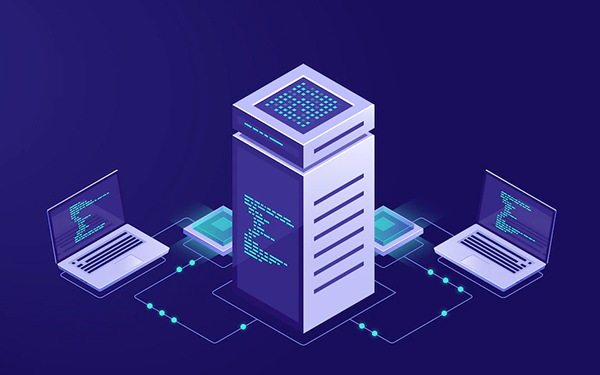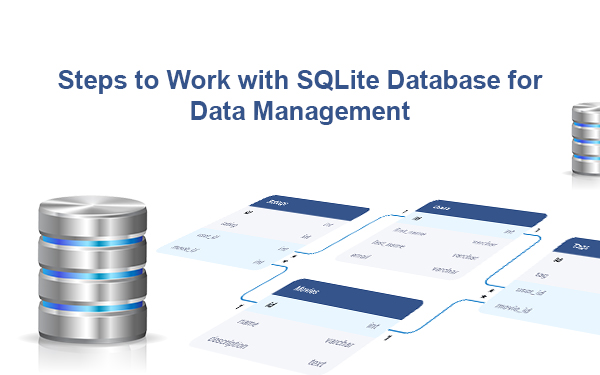Step 1: Defining the Trainee Class
Now initially we will define the Trainee class using the get and set methods.
For Example:
Trainee.java
package com.androidhive.androidsqlite;
public class Trainee
{
//We declare the variables to be used in the class. These are the private variables.
int _trainee_id;
String _trainee_name;
String _course_name;
// Empty constructor to prevent someone from accidentally instantiating the trainee class
public Trainee()
{
}
// Constructor
public Trainee(int trainee_id, String trainee_name, String course_name){
this._ trainee_id = trainee_id;
this._ trainee_name = trainee_name;
this._ course_name = course_name;
}
// Get & Set the Trainee ID
public int getTraineeID()
{
return this._ trainee_id;//getting ID
}
public void setTraineeID(int trainee_id)
{
this._ trainee_id = trainee_id; // setting id
}
// Get & Set Trainee Name
public String getTraineeName()
{
return this._ trainee_name; // getting name
}
public void setTraineeName(String trainee_name)
{
this._ trainee_name = trainee_name; // setting name
}
// Get & Set Course Name
public String getCourseName()
{
return this._ course_name; // getting course name
}
public void setCourseName(String course_name)
{
this._ course_name = course_name; // setting course name
}
}
Step 2: Defining a CustomDatabaseHandler Class to handle all the database operations
Now we will create a class CustomDatabaseHandler that extends from the SQLiteOpenHelper class. The SQLiteOpenHelper class is used for database creation. This class will automatically create a database if it does not exist already or otherwise open the database if it exists and thus helps to implement the upgrading processes as necessary.
As we create a subclass of SQLiteOpenHelper class we are required to redefine its methods
on Create(SQLiteDatabase db) and onUpgrade(SQLiteDatabase db, int oldVersion, int newVersion) in the subclass. onCreate method is called for creating tables and onUpgrade method is to upgrade the table with modifications if any.
For Example:
public class CustomDatabaseHandler extends SQLiteOpenHelper
{
private static final int DATABASE_VERSION = 1; // defining the database version is mandatory
private static final String DATABASE_NAME = “traineeManager”; // Database Name
private static final String TABLE_NAME = “traineeDetails”; // table name
private static final String MAIN_TRAINEE_ID = “trainee_id”;
private static final String MAIN_TRAINEE _NAME = “trainee_name”;
private static final String MAIN_COURSE_NAME = “course_name”;
public CustomDatabaseHandler(Context context) {
super(context, DATABASE_NAME, null, DATABASE_VERSION);
}
// Override onCreate method to create table
public void onCreate(SQLiteDatabase db) {
String CREATE_TRAINEE_TABLE = “CREATE TABLE ” + TABLE_NAME + “(”
+ MAIN_TRAINEE_ID + ” INTEGER PRIMARY KEY,” + MAIN_TRAINEE _NAME + ” TEXT,”
+ MAIN_ COURSE_NAME + ” TEXT” + “)”;
db.execSQL(CREATE_ TRAINEE _TABLE);
}
// Override onUpgrade method
public void onUpgrade(SQLiteDatabase db, int oldVersion, int newVersion) {
db.execSQL(“DROP TABLE IF EXISTS ” + TABLE_NAME); //drop the table if there already exists table with this name
onCreate(db);//Hence, create new table once again
}
Step 3: Inserting Data into the Table
Once we have created a table, our next step is to add data into the table. For this we will create a class ContentValues and hence, by passing the object of this class to insert method we will insert the data into database.
public void addTraineeDetails(Trainee trainee)
{
CustomDatabaseHandler cDbHelper = new CustomDatabaseHandler((getContext());//instantiate the subclass of SQLiteOpenHelper Class
SQLiteDatabase db = cDbHelper.getWritableDatabase();//Setting the database in write mode to allow insertion of values
ContentValues values = new ContentValues();
values.put(MAIN_TRAINEE_ID, trainee.getTraineeID();//This calls the getTraineeID() method that was defined in Trainee.java
values.put(MAIN_TRAINEE_NAME, trainee.getTraineeName());//This calls the getTraineeName() method that was defined in Trainee.java
values.put(MAIN_COURSE_NAME, trainee.getCourseName()); //This calls the getCourseName() method that was defined in Trainee.java
db.insert(TABLE_NAME, null, values);//Inserting Values into Database
db.close(); // Closing database connection upon completion of insert task
}
Step 4: Reading the Data from Database Table
Now, we are ready to display or read the data present in the table. Following code shows how we can derive all trainee details present in the database in array list format of Trainee class type. Here we are using the if and do-while loops to extract each and every row data from the table
public List getAllTraineeDetails() {// getAllTraineeDetails() will return all trainee details from database in array list format
List traineeList = new ArrayList();
String selectQuery = “SELECT * FROM ” + TABLE_NAME;
CustomDatabaseHandler cDbHelper = new CustomDatabaseHandler((getContext());
SQLiteDatabase db = cDbHelper.getWritableDatabase();
Cursor cursor = db.rawQuery(selectQuery, null);
if (cursor.moveToFirst()) {//loop to derive all the values
do {
Trainee trainee = new Trainee();
trainee.setTraineeID(Integer.parseInt(cursor.getString(0)));//Here the setTraineeID method that was defined in Trainee.java
trainee.setTraineeName(cursor.getString(1)); //Here the setTraineeName method that was defined in Trainee.java
trainee.setCourseName(cursor.getString(2)); //Here the setCourseName method that was defined in Trainee.java
traineeList.add(trainee);//adding the retrieved values to the created arraylist
} while (cursor.moveToNext());
}
return traineeList;//return the list of
}
Step 5: Updating the Table
We are now updating a single trainee details in database using the updateTrainee method that takes object of the Trainee class as parameter.
public int updateTrainee(Trainee trainee) {
CustomDatabaseHandler cDbHelper = new CustomDatabaseHandler((getContext());//setting the database write mode
SQLiteDatabase db = cDbHelper.getWritableDatabase();
ContentValues values = new ContentValues();
values.put(MAIN_TRAINEE_NAME, trainee.getTraineeName());
values.put(MAIN_COURSE_NAME, trainee.getCourseName());
return db.update(TABLE_NAME, values, MAIN_TRAINEE_ID + ” = ?”,
new String[] { String.valueOf(Trainee.getTraineeID()) });
}
Step 6: Deleting the Data from Table
Finally we are deleting a single trainee details from the database using the deleteTrainee method that takes object of Trainee class as parameter.
public void deleteTrainee(Trainee trainee) {
CustomDatabaseHandler cDbHelper = new CustomDatabaseHandler((getContext());//setting the database write mode
SQLiteDatabase db = cDbHelper.getWritableDatabase();
db.delete(TABLE_NAME, MAIN_TRAINEE_ID + ” = ?”,
new String[] { String.valueOf(Trainee.getTraineeID()) });
db.close();
}
Hence, by using the above mentioned steps one can perform SQLite database operations for the Android apps. This allows the developer to create a mechanism to store data in the android device database.
Android App Development Course for beginners. It will teach you how to use SQLite database for data management.

SQLite is a lightweight, in-process library that implements a self-contained, serverless, zero downtime SQL database engine. SQLite is the most widely deployed database engine in the world with an estimated 1 billion installations and more than three decades of development by a team of volunteers.
The tops technologies course is designed to teach students about the latest and greatest technologies. It will cover topics like web development, cyber security, programming languages, and more. If you want to be successful in the IT field, it's important that you have a good understanding of all the latest technologies. The training course is perfect for anyone who needs to be ready for a career in the IT field. Learn android programming from our expert trainers and gain skills that are in high demand! The training course is perfect for anyone who needs to be ready for a career in the IT field. Learn android programming from our android training institute. We provide The Best Android Training Institute in Vadodara, Surat, Ahmedabad, Rajkot, and Nagpur with live projects and 100% placement assistance.
Author Bio:
Niral Modi works as a Chief Executive Officer at TOPS Technologies, which is an Education company with an estimated 303 employees; and was founded in 2008. They are part of the Executive team within the C-Suite Department, and their management level is C-Level. Niral is currently based in Chicago, United States.
TOPS Technologies offer The Best Android classes in Ahmedabad, Hardware Training Classes, Graphic Designing & Web Design Training through Live Project Training. Having tie-ups with 3000+ IT software development companies, We provide a 100% Job Guarantee in Software Development Courses. We are known for our training courses in PHP, Python, Java, Android & iOS, Asp. Net, C & C++, Android Development Course, IoT, Software Testing, CCNA, Cloud Computing, Ethical Hacking, Hardware Networking, Cyber Security Training, Digital Marketing and SEO. We also teach Laravel, Nodejs, Unity 3D Game Development, Machine Learning with Python, Data Science, and Linux server training! Check out our YouTube channel for more information on any course, such as android training, graphic design, and web design, among others.







